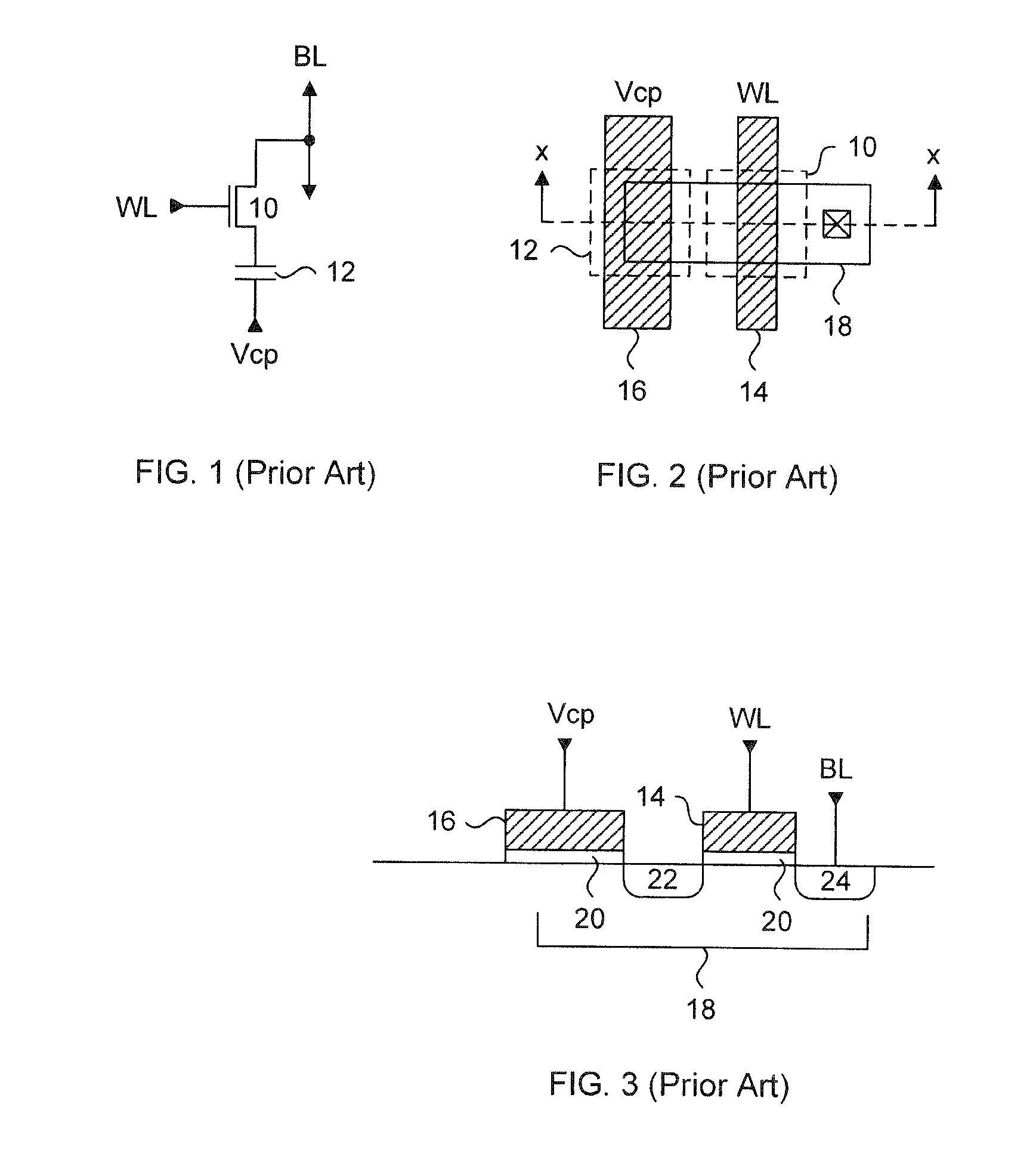Otp memory cell having low current leakage
a memory cell and low current leakage technology, applied in the field of nonvolatile memory, can solve the problems of high leakage of salicided transistors, lower breakdown voltage, and significant cost overhead in redesigning, and achieve the reliability of anti-fuse memory devices
- Summary
- Abstract
- Description
- Claims
- Application Information
AI Technical Summary
Benefits of technology
Problems solved by technology
Method used
Image
Examples
Embodiment Construction
[0043]The embodiments of the present invention address the need for improved control of the dielectric breakdown of the anti-fuse device of OTP memory cells during the programming of the OTP cells, while minimizing current leakage. According to the present embodiments, this is achieved by fabricating the access transistor and anti-fuse device over wells of different or opposite type. Referred to as a twin well anti-fuse memory cell from this point forward, the present embodiments describe both single transistor 1T and two-transistor 2T memory cells using standard CMOS device processing without the need for added processing steps, since the structures of the twin well anti-fuse memory cells can be fabricated at the same time as the other transistor devices outside of the memory array are formed.
[0044]In particular, the twin well anti-fuse memory cells of the present embodiments comprise of a first well of a first type, a second well of the second type, an anti-fuse device formed over...
PUM
 Login to View More
Login to View More Abstract
Description
Claims
Application Information
 Login to View More
Login to View More - R&D
- Intellectual Property
- Life Sciences
- Materials
- Tech Scout
- Unparalleled Data Quality
- Higher Quality Content
- 60% Fewer Hallucinations
Browse by: Latest US Patents, China's latest patents, Technical Efficacy Thesaurus, Application Domain, Technology Topic, Popular Technical Reports.
© 2025 PatSnap. All rights reserved.Legal|Privacy policy|Modern Slavery Act Transparency Statement|Sitemap|About US| Contact US: help@patsnap.com



